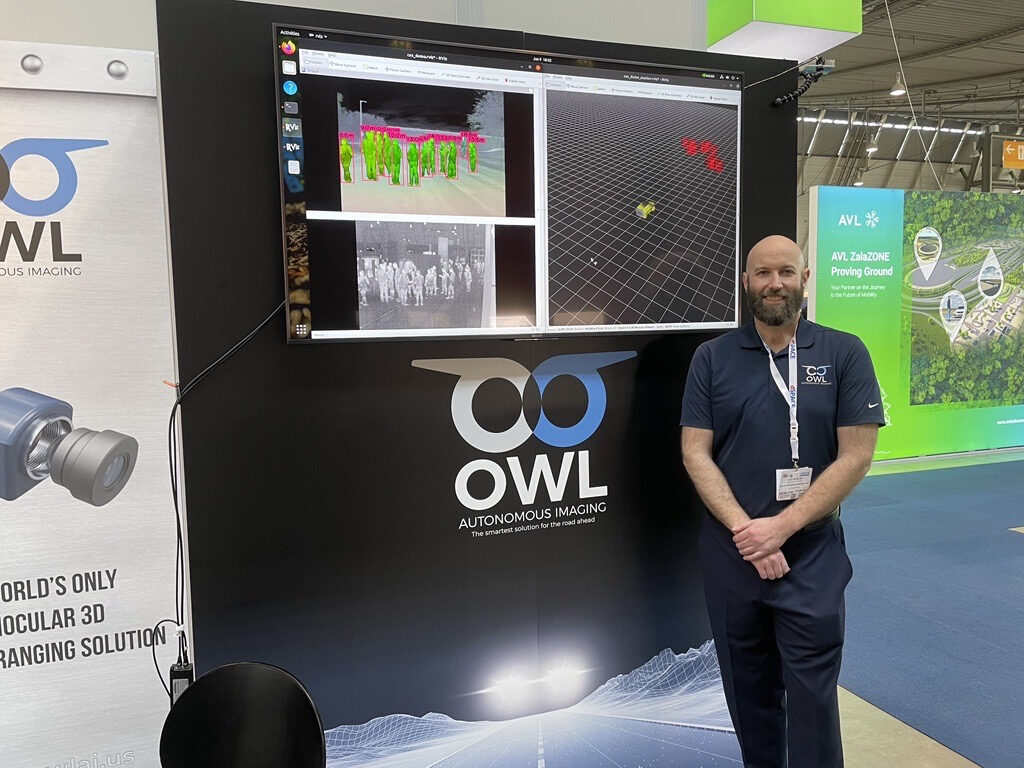First-time ADAS & Autonomous Vehicle Technology Expo exhibitor Owl Autonomous Imaging is receiving a lot of interest in its Thermal Ranger imaging solution for use in pedestrian automatic emergency braking (PAEB) and other ADAS applications supporting L2, L2+ and L3/L4 requirements. The company’s monocular thermal camera technology enables 2D and 3D perception for object classification, 3D segmentation of objects, RGB-to-thermal fusion and highly accurate distance measurements.
The Thermal Ranger platform not only enables cars to see at night, it also enables the vehicle to know how far away a living object is and what it is. Currently providing VGA image resolution, the company is continuing to work on HD imaging to provide a 150x improvement in resolution and cloud density over other sensing modalities.
The platform operates day and night, in all weather, and definitively classifies vulnerable road users (VRUs) including pedestrians, cyclists, animals and vehicles, all the while calculating position and direction to enable safe autonomous and semi-autonomous vehicle operation. It consists of a thermal imaging camera, an NVIDIA Jetson AGX Orin AI processor, and the Owl AI software suite including convolutional neural networks (CNNs), Robot Operating System (ROS) applications, AI/ML framework and drivers, and necessary cables and adapters. The CNNs operate on the thermal images to provide 3D object classification and ranging information using the ROS Publish-Subscribe interface. Several example ROS applications are also included.
“We’re showing monocular thermal imaging, specifically for ADAS,” explained Alex Gilblom (pictured above), director of sales at Owl Autonomous Imaging. “We use a single long-wave infrared thermal imager that is able to detect, segment and range pedestrians. Using AI convolutional neural networks, you can infer the distance of pedestrians using a single camera – this is a key differentiator, as normally you would need a stereo or pair of cameras, so in effect we’ve now cut in half the amount of hardware that you need.”
The new platform is well timed, given last month’s notice of proposed rulemaking from the US Department of Transportation’s National Highway Traffic Safety Administration (NHTSA), that seeks to require automatic emergency braking and pedestrian AEB systems on nearly all passenger cars and light trucks within the next three years.
“Specifically, the new rule proposed by NHTSA says pedestrians must be detected at night and in total darkness,” continued Gilblom. “We are offering a passive technology that requires no external illumination and can reliably detect a pedestrian and bring the car to a complete stop. We have had both automotive OEMs and Tier 1s approach us here in Stuttgart, asking for additional information. It’s only been a couple of hours but we have already had some great leads.”
Visit Owl Autonomous Imaging on Booth 6027.



